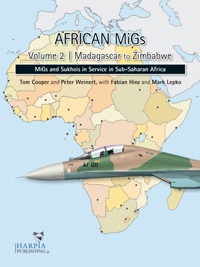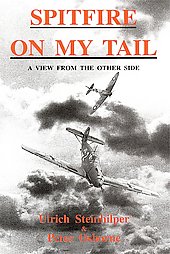225th Review Operations Leopard’ and Red Bean’ – Kolwezi 1978- Daniel Kowalczuk
Daniel Kowalczuk is a Polish man specialised in ‘post-colonial wars’. The Kolwezi-drama is a good example of that. This takes place after the de-colonisation of Belgian Congo in the Democratic Republic Congo in 1960 after which the province Katanga declares itself independent. This disloyal province was, by the way, after a three year battle with a 20.000 men strong UN army added again to the Democratic Republic Congo. Which later was renamed by Mobutu to Zaire. UN Secretary General Dag Hammarskjold crashed in the jungle with his DC 6. Under ‘rather suspicious circumstances’.
My interest for this dates from the time that I shared a house with a girl from Congo (later Zaire) and in that time fanatically collected stamps from Belgian origin (King Boudewijn!) with KATANGA as offprint. This book(let) describes the rise of Mobutu, the by the West supported dictator from Zaire, who, with thanks to the Western support would stay in command another 20 years after ‘Kolwezi”. Mobutu interfered with the civil war in the nearby situated Angola, where ‘left’ and ‘right’ battled for command. Support to the ‘right’ gave a reaction by the ‘left’: an attack on the centre of the collective foreign mining industry companies in Kolwezi, where a couple of thousand French, Belgian and American employees lived with their families.
For this attack the in Angola trained and armed Front National pour la Liberation du Congo was deployed. Kolwezi was an ideal target, close to the Angolan border and ‘chock full’ with white potential hostages. Almost immediately after the seizing of Kolwezi messages appeared about completely out of control massacres. It was clear that Mobutu and his followers couldn’t (and wanted) not to do anything about this. Reason for France that as only country had a ‘no-nonsense’ foreign legion at its disposal, to decide to attack immediately, trailing in their wake the Belgian Regiment Para-Commando’s.
The French 2nd Regiment Etranger Parachutiste was dropped in the centre of Kolwezi from 200 meters. The surprise element was because of this, maximum! A day later the Belgian foot troops followed. Although the French and Belgian government had different ideas about the authority before – and the order for their troops, was one another quickly solved by the captains; the multiple practise together paid off here!
Although almost 200 white mining employees and a multiple of Congolese were murdered, more than 2000 expats were rescued and evacuated. To be short, operation Leopard (France) and Red Bean (Belgian) was a success!
The book contains a lot of photos and ‘colour pictures’ of the deployed weaponry and also a lot of attention for the setup of the Zaire’s air force and the by the French, Belgian and Americans deployed airplanes, which supported the rescue of Kolwezi. This makes the book also interested for aviation fans! Daniel gives with this book an overview from the postcolonial period of Congo and zooms of course in on the events around Kolwezi in 1978. Therewith it is a captivating work for interested in the history of postcolonial Africa.












Leave a Reply